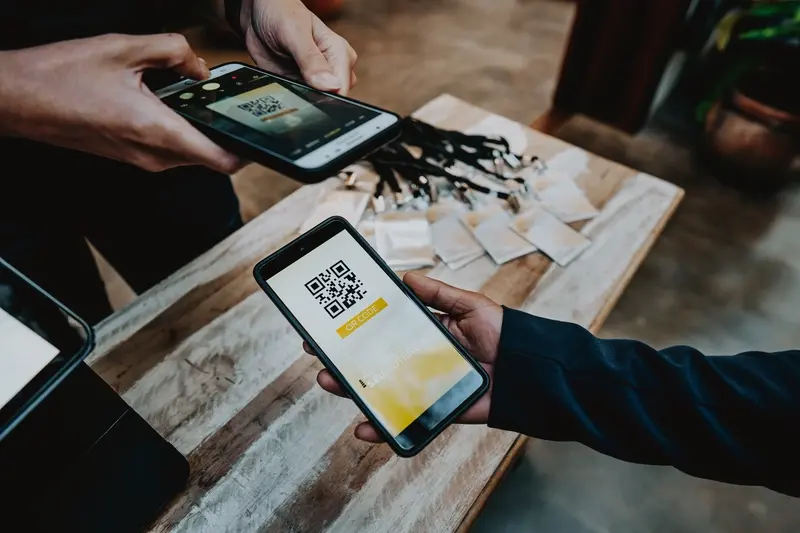Should My Event Management App Include Social Features For Networking?
Have you ever wondered why some event apps get deleted straight after the event whilst others become part of people's regular app rotation? After eight years of building event management apps for conferences, festivals, and corporate gatherings, I can tell you the difference often comes down to one thing—whether the app helps people connect with each other or just serves as a fancy digital programme.
The reality is that most people attend events for two reasons: to learn something new and to meet people who share their interests. Yet many event organisers focus all their energy on the first part whilst completely ignoring the second. They'll spend months perfecting speaker profiles and session schedules but give no thought to how attendees might actually find and connect with each other.
The best networking happens when people feel comfortable approaching strangers, and social features can be the bridge that makes those connections feel natural rather than forced.
Social features and networking tools aren't just nice-to-have extras anymore—they're becoming expected parts of the event experience. But here's the thing: not every event needs them, and when they're done badly, they can actually make the networking experience worse. This guide will help you work out whether social features belong in your event app and, if they do, how to implement them in a way that actually brings your community together rather than creating digital noise.
What Are Social Features in Event Management Apps
Social features are the parts of your event app that let attendees connect with each other. They're the tools that help people find others with similar interests, chat before the event starts, or arrange to meet up during coffee breaks. Think of them as the digital equivalent of name badges and networking sessions—but much more powerful.
These features can be quite simple or surprisingly complex. At the basic level, you might have attendee profiles where people can share their job title and company. More advanced apps include private messaging, group discussions, and even AI-powered matchmaking that suggests who you should meet based on shared interests or business goals.
Common Types of Social Features
- Attendee directories and profiles
- Direct messaging between participants
- Group chat rooms or discussion forums
- Social media integration for sharing updates
- Meeting scheduling tools
- Business card exchange functionality
- Activity feeds showing what others are doing
The key thing to understand is that social features aren't just add-ons—they can become the main reason people use your app. When done well, they transform a simple event programme into a networking platform that people actually want to engage with before, during, and after your event.
Why People Want to Network at Events
People attend events for all sorts of reasons, but networking sits right at the top of the list for most attendees. It's not just about collecting business cards anymore—people genuinely want to connect with others who share their interests, challenges, or industry.
Think about it from your own experience. When you go to a conference or workshop, you're probably hoping to meet someone who can help solve a problem you're facing, or perhaps you want to find potential collaborators for future projects. Some attendees are looking for their next job opportunity, whilst others want to learn from people who've already achieved what they're working towards.
The Main Networking Motivations
- Finding new business opportunities and partnerships
- Learning from industry experts and peers
- Discovering solutions to current challenges
- Building professional relationships for future collaboration
- Staying updated on industry trends and developments
- Expanding their professional circle beyond their immediate workplace
What's interesting is that networking has become less formal over the years. People don't just want to exchange contact details—they want meaningful conversations that lead to ongoing relationships. This shift towards building genuine community connections is exactly why social features in event apps have become so popular.
Most successful networking happens before and after the main event sessions, not during them. Your app should facilitate these informal connection moments.
The Benefits of Adding Social Features to Your Event App
Adding social features to your event app can completely transform how attendees experience your event. When people can connect with each other through your app, they're more likely to stay engaged before, during, and after the event happens.
The biggest win is engagement. Social features keep people coming back to your app—they'll check messages, browse attendee profiles, and look for networking opportunities. This means more app opens, longer session times, and better data about what your attendees actually want.
Key Benefits for Event Organisers
- Higher app adoption rates as attendees find genuine value
- Better attendee satisfaction scores and feedback
- Increased sponsorship opportunities through targeted networking
- Valuable data on attendee preferences and behaviour
- Extended event lifespan through ongoing connections
From a business perspective, social features create stickiness. Attendees who make connections through your app are more likely to return to future events; they've invested time building relationships that tie back to your brand.
The networking aspect can also generate additional revenue streams. Sponsors love being able to connect directly with potential customers, and premium networking features can justify higher ticket prices or app subscription fees.
Most importantly, social features solve a real problem—meeting the right people at events is genuinely difficult, and your app can make that process much smoother.
Common Social Features That Work Well in Event Apps
After building event apps for years, I've noticed that certain social features consistently get people talking and connecting. The most popular one has to be attendee profiles—people love being able to browse through other participants, see their job titles, companies, and interests before they meet. It's like having a preview of who you might want to chat with over coffee.
Direct messaging works brilliantly too; attendees can reach out to each other before, during, and after events to arrange meetups or continue conversations. I've seen event organisers rave about how this feature extends the networking beyond just the event day itself.
Interactive Features That Build Community
Live polls and Q&A sessions are absolute winners—they get the audience involved and create shared moments that people remember. Activity feeds where attendees can share photos, thoughts, or updates about sessions they're attending work well for larger conferences. Business card scanning is another favourite; it saves people from fumbling around with physical cards and automatically connects new contacts within the app.
The best networking happens when people feel comfortable and have something to talk about
Group discussions or forums organised by topic or industry help people find their tribe within larger events. Meeting scheduling tools are practical crowd-pleasers too—they let people book time slots with speakers or other attendees without the back-and-forth of emails.
When Social Features Might Not Be Right for Your Event App
Not every event needs social features—and that's perfectly fine. I've worked on plenty of successful event apps that kept things simple and focused on the basics. Sometimes adding social networking capabilities can actually make your app worse, not better.
Small Events Don't Always Need Big Features
If you're running a small conference with 50 people, a full social platform might feel like overkill. Everyone will probably meet face-to-face anyway, so why complicate things? The same goes for very short events—a two-hour workshop doesn't need a networking system that takes longer to set up than the event itself.
Budget and Timeline Reality Check
Social features aren't cheap to build or maintain. You'll need user profiles, messaging systems, privacy controls, and moderation tools. That's a lot of development time and ongoing costs for features that might sit unused. If your budget is tight, you're better off perfecting core event functionality first.
Some events also have strict privacy requirements. Corporate training sessions, medical conferences, or legal meetings might need to keep attendee information completely private. Adding social features to these apps could create unwanted security risks or compliance headaches that just aren't worth the trouble.
How to Design Social Features That People Actually Use
Right, let's get real about social features—most of them fail spectacularly because they're designed by developers who think people want to share everything. The truth is, event attendees are picky about what they'll engage with, and for good reason.
The golden rule I've learned after countless event app projects is this: make networking feel natural, not forced. People don't want another Facebook clone in their event app. They want tools that solve actual problems they face at events.
Focus on Real Problems
Start by understanding what your attendees actually struggle with. Can't find the person they met yesterday? Design a simple attendee search. Struggling to remember conversation topics? Add brief profile highlights. Getting lost between sessions? Include location-based meetup suggestions.
Keep social interactions optional and low-pressure. Nobody should feel obligated to participate in networking features to enjoy your event.
Design for Busy People
Event attendees are juggling packed schedules; they don't have time for complicated social interfaces. Your networking features need to work in seconds, not minutes.
- Make profiles scannable with key information visible immediately
- Use one-tap actions for common networking tasks
- Send smart notifications that add value without being annoying
- Keep messaging simple and purpose-built for professional connections
The best social features feel invisible—they work so smoothly that people forget they're using an app at all. This is what distinguishes stellar apps from so-so ones.
Conclusion
After building event management apps for years, I can tell you that the decision about social features isn't one you should take lightly. These features can make or break your app's success—they're either the thing that brings people together or the annoying distraction nobody uses.
The truth is, there's no universal answer. Some events thrive with robust networking tools, whilst others work better with minimal social elements. Your event type, audience, and goals should drive this decision. A tech conference full of entrepreneurs will have very different needs compared to a local food festival or corporate training session.
What I've learned is that half-hearted social features are worse than none at all. If you're going to include them, commit to making them genuinely useful. Design them with real user behaviour in mind—not what sounds good in a boardroom meeting. People won't magically start networking just because you've added a chat feature.
Start simple. Test what works. Listen to your users. The best event apps I've worked on evolved their social features based on actual usage, not assumptions. Your attendees will tell you what they need if you pay attention to how they behave, not just what they say they want.
Share this
Subscribe To Our Learning Centre
You May Also Like
These Related Guides

Should My Event App Work for Both Virtual and in-Person Events?

What Features Should My Event Planning App Have For Organisers?



